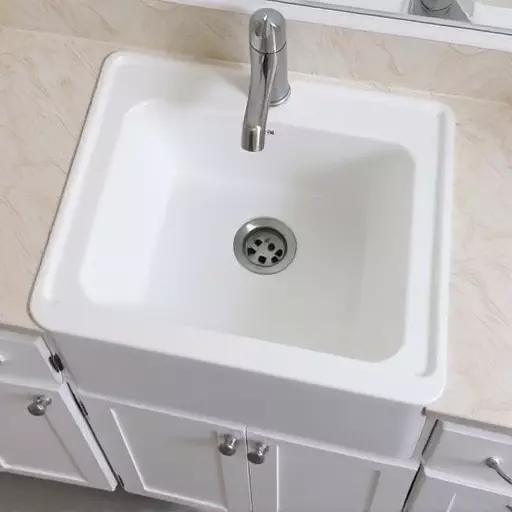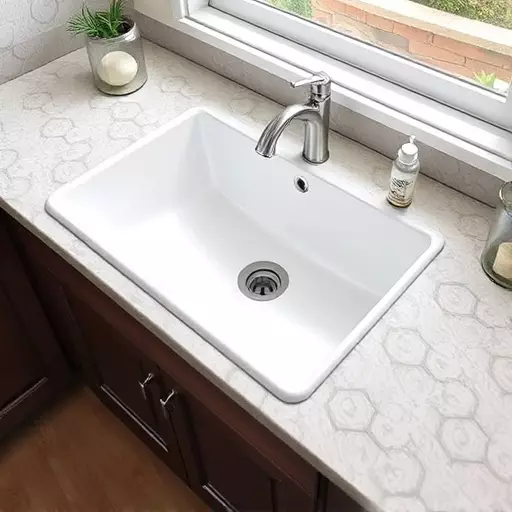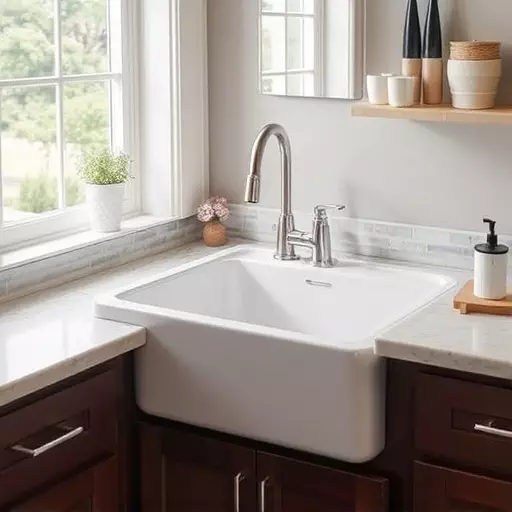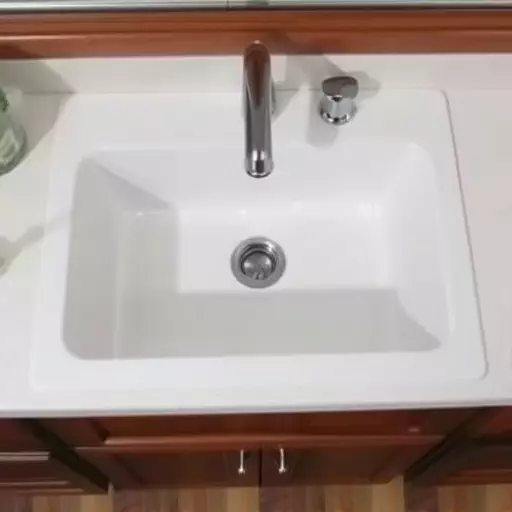Understanding sink piping is crucial for any installation or repair project in Toledo. Water enters through supply lines regulated by a faucet, flows into the basin, and proper piping ensures smooth flow and drainage. Damage, leaks, or slow drainage indicate replacement time, with options like undermount or drop-in sinks. Installation involves turning off water, removing old sinks, preparing new ones, securing them, connecting water lines, and testing for leaks. Proper drainage connections and compatible fittings prevent leaks and ensure smooth water flow. Regular cleaning, avoiding harsh chemicals, maintaining sealing, and regular drain flushing prolong sink life. For professional Sink Installation and Repair Toledo services, contact experts who offer both functionality and aesthetic appeal.
Considering a sink installation or repair in Toledo? Whether it’s an old, leaky faucet or a damaged pipe, understanding your sink piping is key. This guide breaks down everything you need to know about sink installations, focusing on two popular types: undermount and drop-in. Learn when to replace your pipes, discover expert tips for both installation methods, and ensure proper drainage and plumbing connections for a hassle-free process.
- Understanding Sink Piping: A Basic Overview
- When to Replace Your Sink Piping
- Types of Sink Installations: Undermount vs Drop-In
- Step-by-Step Guide for Undermount Sink Installation
- Ensuring Proper Drainage and Plumbing Connections
- Maintenance Tips for Longevity of Your New Sink Installation
Understanding Sink Piping: A Basic Overview

Understanding the inner workings of sink piping is key to any installation or repair project in Toledo or beyond. At its core, a sink’s plumbing involves several components designed to efficiently manage water flow and drainage. The process begins with water entering through supply lines, which are connected to the main water source. This water then passes through the faucet or control valve, where it is regulated before flowing into the sink basin.
The basin itself is typically attached via two primary methods: undermount or drop-in installation. Undermount sinks are mounted beneath a counter, creating a seamless appearance and smooth surface. In contrast, drop-in sinks sit within a cutout in the counter, offering a classic look with visible sink edges. Regardless of the type, proper piping ensures smooth water flow and effective drainage, making it crucial to have knowledge of sink installation and repair processes during any home improvement endeavor.
When to Replace Your Sink Piping

If your sink is showing signs of damage, leakage, or slow drainage, it might be time to consider replacing your sink piping. Over time, pipes can become corroded, blocked, or simply reach the end of their lifespan, leading to inefficient water flow and potential flooding. One of the first indicators that your plumbing needs attention is when you notice persistent leaks around the base of your sink. These leaks not only waste precious water but also contribute to higher water bills.
Additionally, if your current sink setup is no longer meeting your needs—be it an outdated style or a poorly functioning design—it could be worth exploring new options. For instance, undermount sinks offer a sleek and modern look, while drop-in sinks provide easy installation and a classic aesthetic. Whether you’re in Toledo or anywhere else, professional sink installation and repair services can help ensure your new piping is both functional and aesthetically pleasing.
Types of Sink Installations: Undermount vs Drop-In

When it comes to sink installations, there are two primary types that homeowners in Toledo often choose between: undermount and drop-in. Each option offers distinct advantages, catering to different preferences and kitchen layouts. Undermount sinks, as the name suggests, are mounted underneath the countertop, creating a seamless appearance with clean lines. This style is popular for its modern aesthetic and ease of cleaning, as the sink appears to float on top of the surface. It’s a preferred choice for those seeking a sleek, contemporary look in their Toledo kitchen renovations or repairs.
On the other hand, drop-in sinks are installed within a hole cut out in the countertop, sitting just at or slightly below counter level. This traditional style offers a more affordable option and is known for its durability. Drop-in sinks provide ample space around the sink, making them ideal for larger families or those who prefer a more functional layout. For both types of installations, professional Sink Installation and Repair services in Toledo can ensure precise fitting, water sealing, and optimal functionality, catering to any homeowner’s needs.
Step-by-Step Guide for Undermount Sink Installation

Replacing your sink can be a straightforward process if you follow a simple step-by-step guide. First, turn off the water supply to ensure no leaks during installation. Next, remove the old sink by detaching the drain and any supply lines, taking note of their connections. Once the old sink is out, prepare the new one for installation. For an undermount sink, drill pilot holes for the cabinet screws, then secure it with the provided hardware. Ensure the sink is level and properly supported before connecting the water lines and reattaching the drain.
A drop-in sink installation requires slightly different steps. Measure the existing sink opening and ensure the new sink fits perfectly. Align the sink with the counter, mark the screw holes, and secure it in place with screws from beneath the counter. Again, connect the water lines and drain carefully. After testing for leaks, you can now enjoy your newly installed sink, whether it’s an undermount or drop-in model. Remember that professional help is always an option if the process seems daunting.
Ensuring Proper Drainage and Plumbing Connections

When undertaking a sink piping replacement, whether for installation or repair in Toledo or elsewhere, ensuring proper drainage and plumbing connections is paramount. The first step involves assessing the current setup to determine the best approach for replacing the pipes. For instance, deciding between an undermount or drop-in sink installation will impact both the drain placement and the overall plumbing layout.
Proper drainage requires seamless connections between the sink, drains, and pipes. This involves using compatible fittings and sealants to prevent leaks and ensure water flows smoothly from the sink into the drain and subsequently through the plumbing system. A professional approach recommends testing these connections after installation to verify their integrity and functionality, ensuring a secure and efficient Sink Installation and Repair process.
Maintenance Tips for Longevity of Your New Sink Installation

After a new sink installation in Toledo, proper maintenance is key to ensuring its longevity and optimal performance. Regular cleaning and care can prevent clogs, corrosion, and damage, extending the life of your investment. Start by cleaning your sink with mild, non-abrasive detergents to remove grease, food particles, and mineral deposits. Avoid using harsh chemicals or abrasive scrubbers that could scratch the surface.
Additionally, consider using a sink mat to catch debris and protect the basin from scratches. Regularly flush drains with hot water mixed with baking soda or vinegar to prevent clogs and maintain smooth water flow. For undermount or drop-in sinks, ensure proper sealing around the edges to avoid water damage. Regular inspection and timely repair of any issues will contribute to a seamless and long-lasting sink installation experience in both residential and commercial settings.


